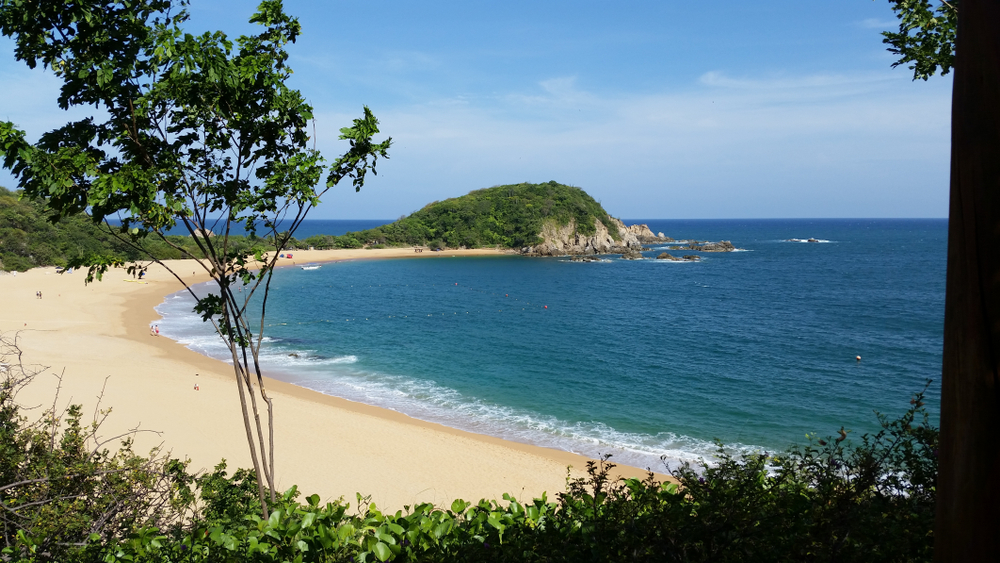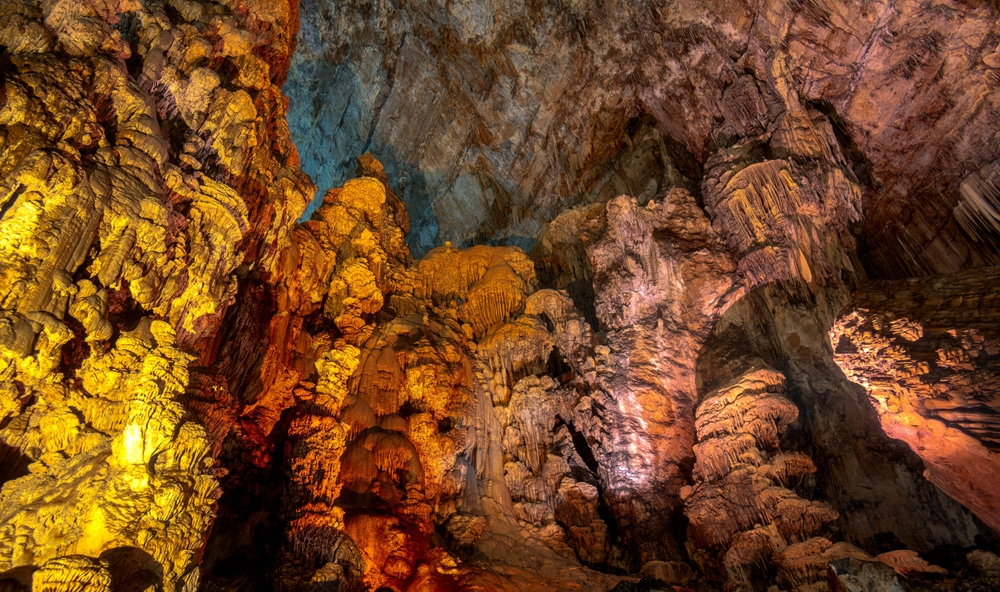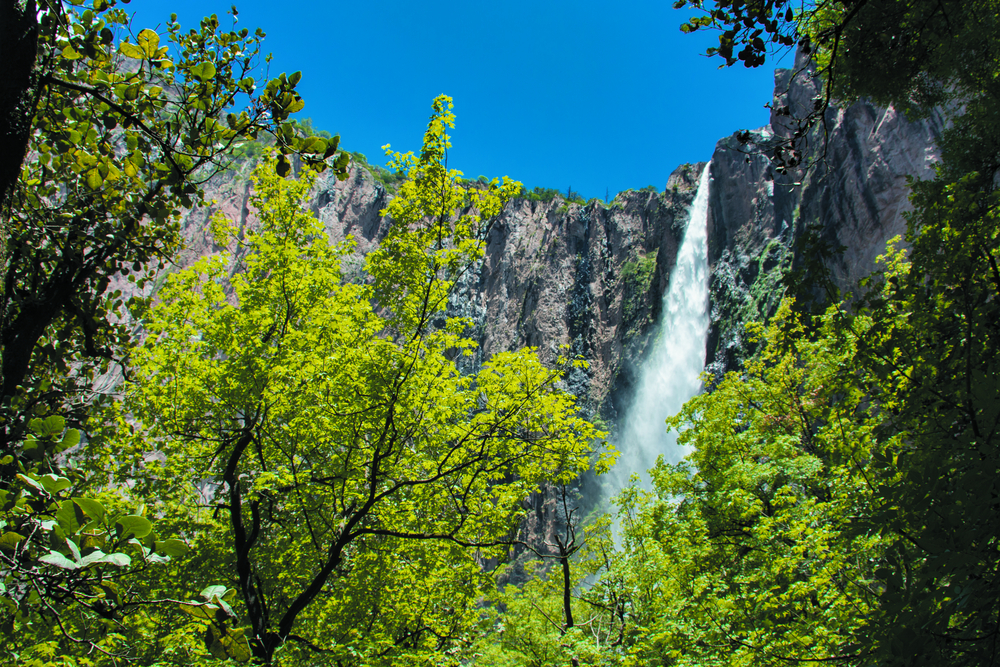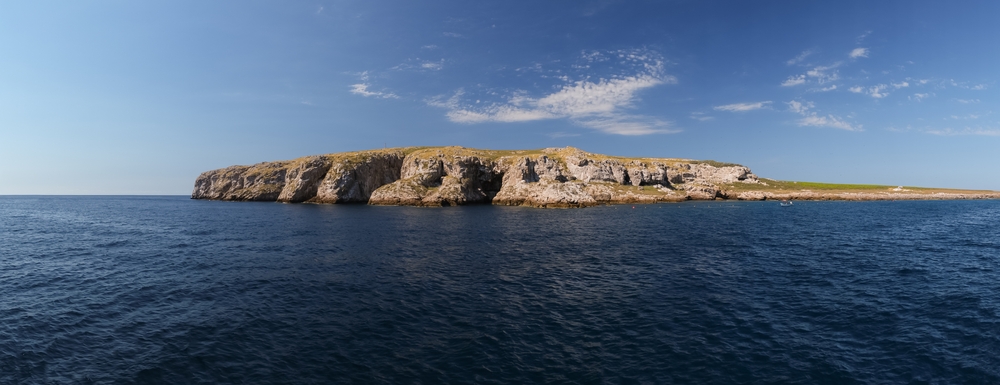Isla Marietas Overview
Isla Marietas National Park, known locally as Parque Nacional Islas Marietas, is a small yet ecologically significant marine park located off the coast of Nayarit, Mexico, in the Pacific Ocean.
Spanning approximately 22 square miles (57 square kilometers), this protected area consists of two main islands and several islets. The park is famous for its striking natural beauty, including rugged volcanic formations, sea caves, and pristine beaches.
The most iconic feature is the Hidden Beach, also called Playa del Amor, a secluded, sandy paradise inside a collapsed cave, accessible only through a narrow water tunnel. The islands are surrounded by crystal-clear waters that range in hues from deep blue to vibrant turquoise, making them a haven for marine life and a spectacular location for underwater exploration.
The islands’ volcanic origin gives rise to unique geological formations, with dramatic cliffs and caves carved by centuries of oceanic erosion. The terrain is rough and largely devoid of large trees, featuring mostly low-lying vegetation, shrubs, and patches of dry tropical forest.
The landscape is shaped by strong ocean currents and wind, which have contributed to the formation of the park’s distinctive rock arches and tunnels. The clear, nutrient-rich waters surrounding the islands support an abundance of marine biodiversity, making it a hotspot for snorkeling and diving enthusiasts. Coral reefs and underwater rock formations provide shelter for a variety of sea creatures, creating a vibrant underwater ecosystem.
Wildlife is one of the park’s main attractions, particularly its diverse bird population. Isla Marietas is a crucial nesting site for the rare and protected blue-footed booby, one of the few places outside the Galápagos Islands where this species can be observed. Other notable bird species include brown pelicans, magnificent frigatebirds, and Heermann’s gulls.
The surrounding waters are home to an incredible variety of marine life, including sea turtles, manta rays, and a wide array of colorful tropical fish. During the winter months, humpback whales migrate to these waters to breed and give birth, offering visitors the chance to witness their spectacular displays. Bottlenose dolphins and orcas are also occasionally spotted in the area.
One of the most popular features of Isla Marietas National Park is Hidden Beach, a partially enclosed stretch of sand surrounded by cliffs and accessible only by swimming through a narrow tunnel. Snorkeling and scuba diving are also major draws, with underwater caves, coral formations, and schools of fish creating a mesmerizing experience.
Kayaking and paddleboarding allow visitors to explore the park’s many coves and inlets while enjoying the stunning coastal scenery. Boat tours operate from nearby destinations such as Puerto Vallarta and Punta Mita, offering guided excursions that showcase the islands’ biodiversity and geological wonders.
Conservation efforts are a key focus for park management, as the fragile ecosystems of Isla Marietas face threats from tourism, illegal fishing, and climate change. The Mexican government has implemented strict visitor limits and seasonal closures to protect the environment, particularly in sensitive areas such as Hidden Beach. Conservation initiatives have also led to the successful regeneration of coral reefs and the recovery of certain bird populations.
Responsible tourism practices are encouraged, and all visitors must adhere to guidelines designed to minimize human impact. While the park continues to face challenges, ongoing efforts to balance ecological preservation with sustainable tourism have led to significant improvements in the health of its ecosystems.
Park Map
Isla Marietas National Park Highlights
Share your clicks with us
Related National Parks More Mexico

Huatulco National Park

Insurgente Jose Maria Morelos Y Pavon National Park

Insurgente Miguel Hidalgo y Costilla National Park

Grutas de Cacahuamilpa National Park

General Juan N. Alvarez National Park

Basaseachic Falls National Park

Cañón del Río Blanco National Park











































































